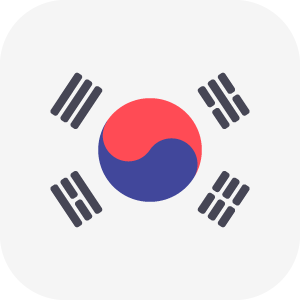
Imagine walking into a Korean restaurant, alongside a few Korean colleagues.
Everyone hungrily orders dishes to share, which are quickly served in steaming hot plates.
You eagerly dig in, and then…
… you notice from the corner of your eye that your colleagues are all mumbling the same phrase while looking at the boss.
Nobody has even picked up their chopsticks yet.
Meanwhile, you already had your second bite.
Oops.
Well, South Korean dining etiquette can surely be tricky.
While you can always play the “I am sorry, I am an outsider to this culture” card,
wouldn’t it be easier to smoothly blend in without raising eyebrows?
So let’s get started with a basic guide to the do’s and don’ts of Korean table manners!
Korean table manners throughout the entire meal:
⭕ Do: Be polite!
Being polite is an important part of Korean table manners as well as entire culture . You should always keep this in mind as you try to adapt to the culture.
When entering:

❌ Don’t: Be startled when you’re greeted with unintelligible yelling.
Famous for their hospitality, many places will welcome guests with an enthusiastic Korean greeting – often also unintelligible to fluent speakers.
⭕ Do: Wait to be seated.
When in the company of elders, it is polite to sit down only after they have taken their seats. According to age or social ranking, the most honoured (usually the eldest person of the group) will sit furthest from the door while the youngest or lowest ranked will sit closest to the door.
Before the meal:

⭕ Do: Wait for the eldest person to lift their spoon or chopsticks first before you start eating.
⭕ Do: Say Jal-meokge-sseum-ni-da (잘 먹겠습니다), or “I will eat well”.
⭕ Do: Create a DIY chopstick rest (if there is none).
During the meal:

❌ Don’t: Hold the bowl of soup or rice.
In contrast to many other Asian countries, Koreans leave their bowl on the table.
⭕ Do: Order extra banchan.
Banchan (side dishes) are included in the cost of the meal and include free refills.
❌ Don’t: Stick your chopsticks straight up into your bowl.
Doing so resembles traditional Korean ancestor ceremonies. It’s not only disrespectful but considered a sign of bad luck.
❌ Don’t: Waste Food!
Ever watched a Korean drama and wondered why Koreans open their mouths so wide when they eat? It’s so that they can finish all the food that’s on their spoon. When it comes to Korean table manners, it’s respectful to finish everything inside your bowl and your spoon.
When it comes to drinking…

⭕ Do: Pour drinks for others!
Always make sure others’ glasses are full, especially those of seniors and your neighbours. As soon as someone’s glass is half empty, you would customarily refill it by politely saying 한 잔 더 받으세요 (han jan deo badeuseyo), or “Let me refill your glass.”
❌ Don’t: Pour your own drink.
In Korea, it is considered rude to pour your own shot. Therefore, wait until someone offers to pour for you.
⭕ Do: Know how to hold your cup!
When someone senior pours a drink for you, hold out your cup with both hands to accept. When you pour for someone senior to you, place your other hand lightly under your pouring hand or your opposite elbow.
After the meal:

❌ Don’t: Leave the table until the eldest has finished eating their meal.
If you are a fast eater, slow down a bit! It is rude to eat quicker than everyone else, especially the elders.
❌ Don’t: Order dessert.
The restaurant won’t have any. Besides, if you have room for dessert, you didn’t do dinner right.
⭕ Do: Acknowledge your hosts.
If someone has hosted you in their home or treated you to a meal out, it is customary to acknowledge your thanks after the meal. In Korean, people say 잘 먹었습니다. [jal meo-geo-sseum-ni-da], or “I ate very well“.

















